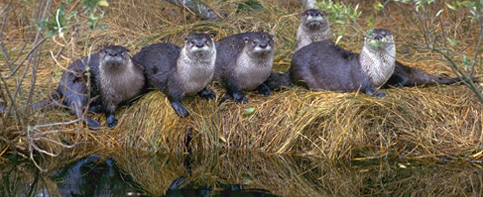
Under the Shoreland Protection Act, projects within the Protected Shoreland Area (PSA), the first 250 feet from the mean water level of lakes and ponds greater than 10 acres, are required to meet the following standards for slope, impervious surface, and cleared area:
- The project site must be located on an area with a slope less than 20%
- No more than 20% of the parcel within the Protected Shoreland Area may consist of impervious surface
- No more than 40% of the parcel within the Protected Shoreland Area may consist of cleared area
For projects that surpass the slope, impervious surface, or cleared area standards, the applicant must propose a best management practice (BMP) to address the exceeded standard. The following is a compilation of suggested best management practices. This list is not exhaustive and any proposed best management practice not listed below must adequately address the applicable standard.

Impervious Surface – Best management practices for greater than 20% impervious surface within the PSA
Cleared Area – Best management practices for greater than 40% cleared area within the PSA
Establishing vegetated buffers and Restoring natural plant communities
For more information on best management practices, please visit the Lake Wise webpage.
How to appropriately size and locate a shoreland best management practice 
A best management practice is most effective when it is designed to meet the needs of the project and placed appropriately on the landscape where it can absorb the most stormwater runoff or where it will be most effective at preventing erosion. There are many options to treat and manage stormwater and to prevent erosion, however, it is important to remember that lakeshores contain sensitive habitat and using heavy machinery at the shoreline to install a BMP may have unintended consequences. Establishing a no-mow zone or revegetating an area within the protected shoreland area are cost-friendly, low maintenance options.
The Green Infrastructure Sizing Tool was developed as a way for landowners to determine the size of a best management practice to be installed based on the square footage of impervious surface that contributes stormwater runoff. A series of fact sheets was created to provide support for the use of this tool.
The Vermont Rain Garden Manual provides information on sizing and constructing a rain garden and it provides several example designs.
Regional Lake and Shoreland permit analysts are available to discuss potential BMPs and to assist with sizing and locating BMP installations.
 Lake Wise
Lake Wise
This Agency of Natural Resources initiative encourages shoreline property owners to voluntarily employ best management practices to improve shoreland habitat and reduce stormwater runoff from reaching a waterbody. Shoreland properties that meet Lake Wise criteria are eligible for an award to display on their lake property. Lake Wise certified properties go above and beyond the Shoreland Protection Act standards. Many best management practices encouraged through the Lake Wise program are also viable options to meet BMP requirements for Shoreland Permitting. The Lake Wise webpage provides examples of additional lake-friendly practices that can be incorporated into lakeshore landscaping and property maintenance.
